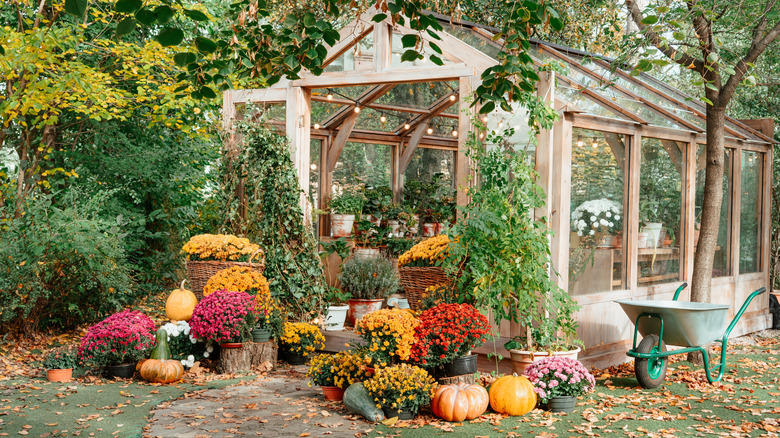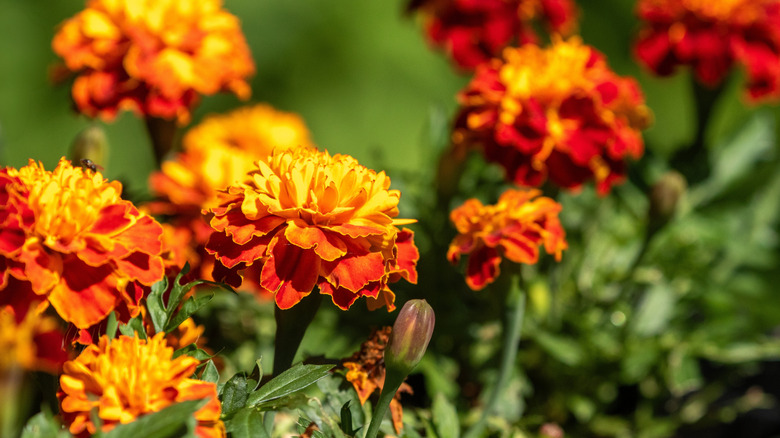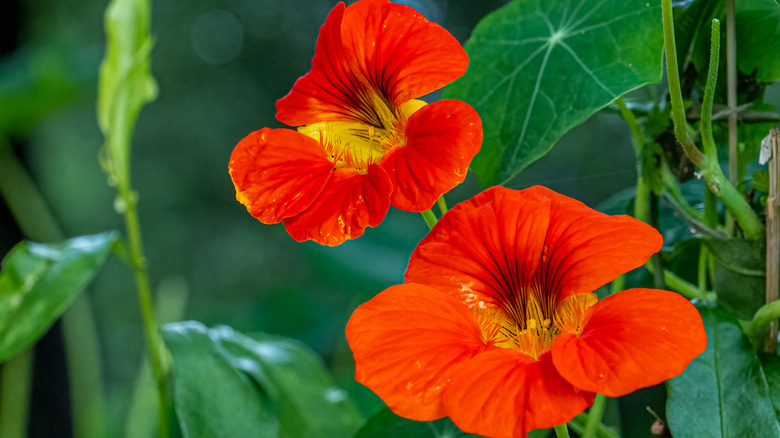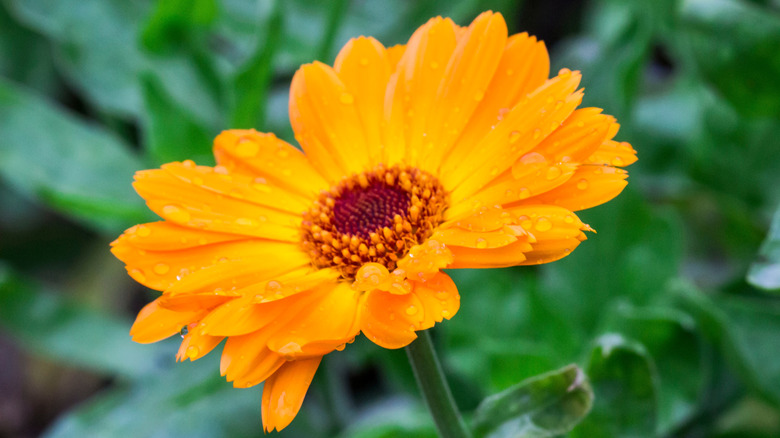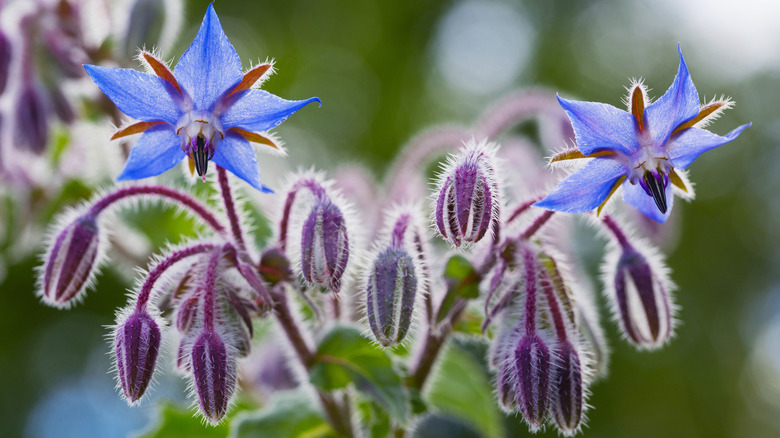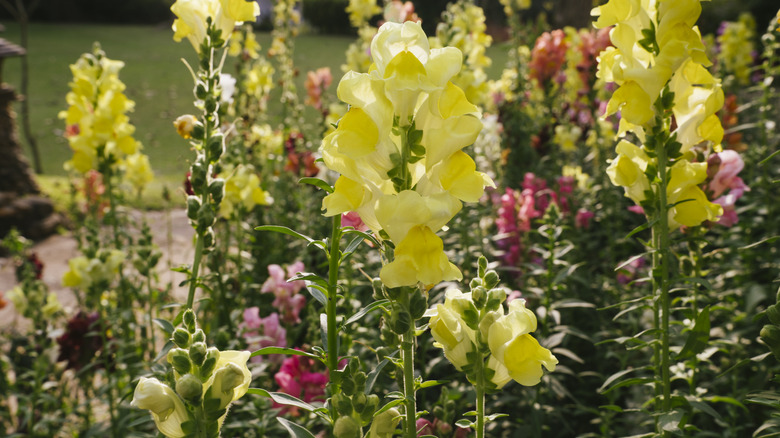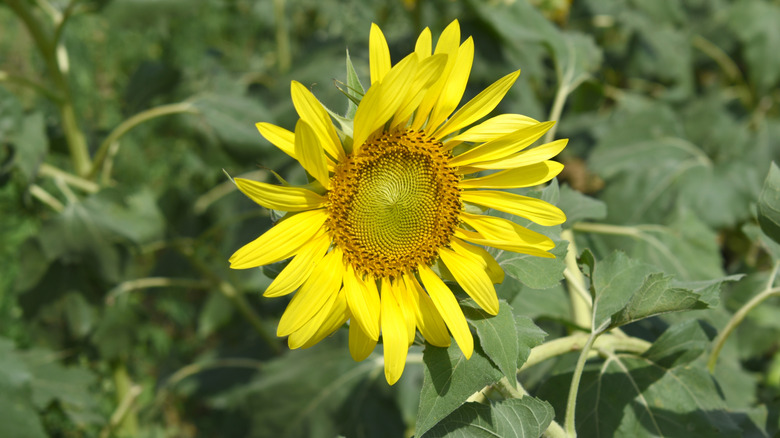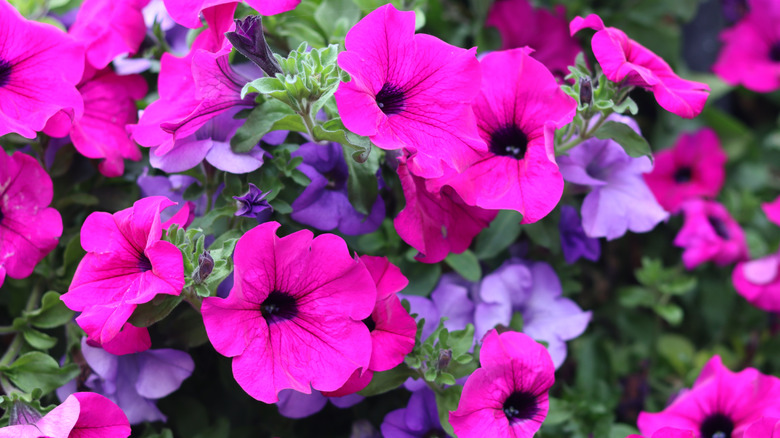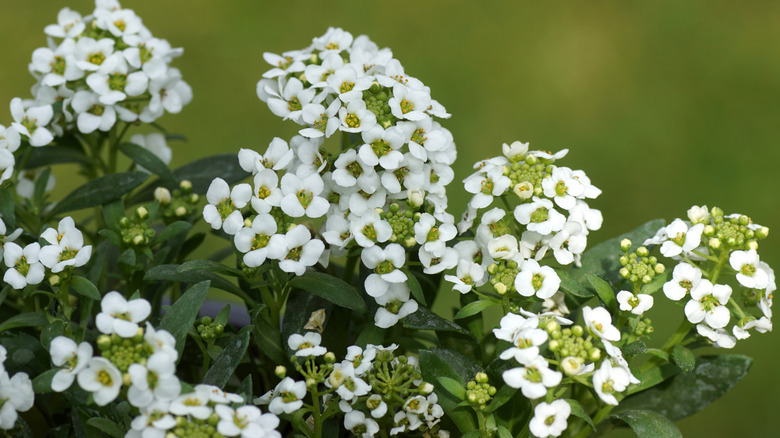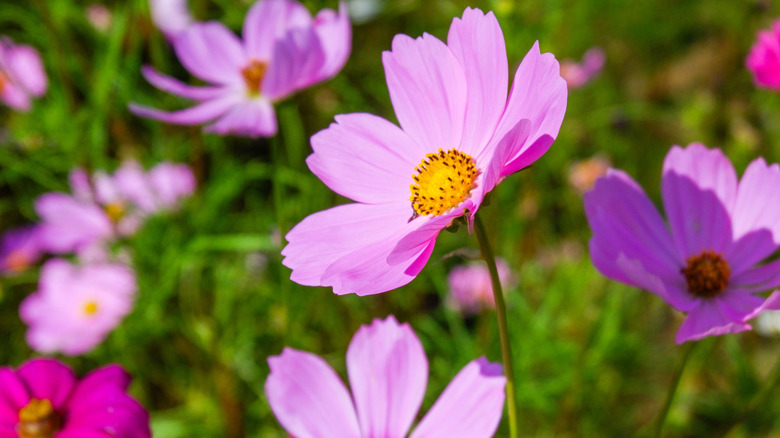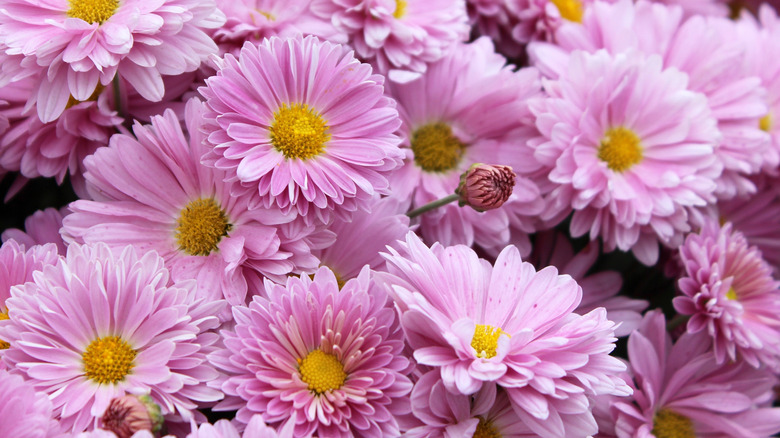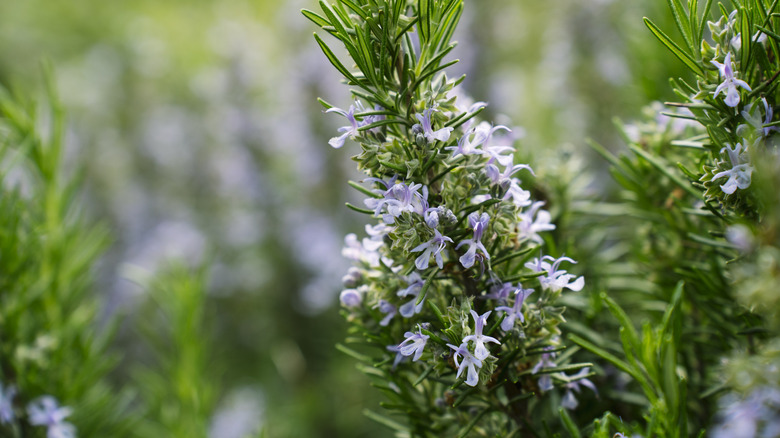11 Companion Flowers That Can Help Your Fall Garden Thrive
Companion planting is a great way to promote healthy crops, protect your plants from pests, and enhance your soil. By bringing a range of plants into your garden, you can create a thriving, self-sustaining yard. You may be planting companion vegetables in your fall garden, but there are also some great flowers to consider. Growing flowers such as calendulas, snapdragons, and borage can bring pollinators and pest-eating insects into your yard. Plus, many of these flowers look beautiful!
However, companion planting does take a little bit of planning. Certain pairings do better than others, so it is best to consider the vegetables you are growing and what flowers support them. If certain pests target a particular crop, consider bringing in flowers that attract insects that prey on those pests. You should also consider your climate and what plants are suitable for it. Some fall companion flowers suffer in a wetter environment whereas others thrive. So, what are some companion flowers you should think about bringing into your fall garden?
French marigolds
Although all varieties of marigolds are fantastic companion plants, French marigolds (Tagetes patula) do well year-round and therefore suit a fall garden. These annuals can be planted alongside most crops, especially tomatoes and peppers, and are great for reducing the number of squash bugs in your vegetable patch. French marigolds also release a chemical that is toxic to root-knot nematodes, which can affect a wide range of plants. If you bring French marigolds into your yard, ensure they are planted in full sun in USDA Hardiness Zones 2 through 11. They can be sown directly outside if the soil temperature is above 65 degrees Fahrenheit.
Nasturtiums
Nasturtiums (Tropaeolum majus) are a fantastic summer companion plant, but these beautiful annuals can last well into the fall. Brilliant for cabbage, cauliflower, kale, broccoli, and squash, nasturtiums work as a trap crop for aphids and attract beneficial predatory insects into your garden. Nasturtiums thrive in well-drained soil in the full sun and grow best in poor soils. You can sow nasturtium seeds directly into your garden in the summer for a fall bloom in USDA Hardiness Zones 2 through 11, burying them half an inch deep. They will then bloom profusely until the first frost, and deadheading prolongs their flowering.
Calendula
Calendulas (Calendula officinalis) have a long bloom season in USDA Hardiness zones 2 through 11, providing you with continuous flowers until the first heavy frost. They are a useful companion flower in a fall garden due to their attractiveness to pollinators and beneficial insects. Suited for a cooler climate, calendulas can be grown in full sun or partial shade. As an annual, calendula can be sown directly into the garden during early summer for a fall bloom. Deadheading regularly will help them bloom for a longer period of time, but apart from that, they are very low-maintenance.
Borage
The dainty, drooping blooms of borage (Borago officinalis) liven up a fall garden and are great companion plants for most crops, especially tomatoes and strawberries. They deter cabbage worms and attract beneficial insects and pollinators into your yard, helping to keep your other plants healthy and thriving. Although it does best in full sun, you can plant borage in partial shade in USDA Hardiness zones 2 through 11. It can thrive in a wide range of soils and can tolerate poor soils and drought well, adding trace minerals to the soil as it decomposes. As a self-seeding flower, borage will come back to your garden year after year to help out.
Snapdragons
Blooming from summer into fall, snapdragons (Antirrhinum majus) are cold-hardy flowers that bring bright colors into the darker months. Their vibrant flowering spikes attract pollinators later in the year, making them a great companion crop for fall, and they do well as a companion flower for celery. Although snapdragons are tender perennials, they are usually grown as annuals. If you want to bring them into your yard, plant them in rich, well-drained soil in the full sun. Best in USDA Hardiness Zones 7 through 10, they don't do well in high heat, so you may need to avoid this companion flower if you live in extremely warm climates.
Sunflowers
Although sunflowers (Helianthus annuus) are iconic summer blooms, planting seeds by mid August will mean they flower in late September and October to help out with your fall garden. They are great alongside cauliflower, kale, and broccoli because they work to distract aphids away from those crops. Sunflowers also attract hummingbirds into your yard, who will eat whiteflies. However, you should never plant sunflowers next to potatoes, as the natural chemicals they release into the soil can affect the potatoes' growth. Sunflowers should be sown directly outdoors in full sunshine and prefer moist, well-drained soils in USDA Hardiness zones 2 through 11.
Petunias
With so many colors and cultivars to pick from, petunias (Petunia spp.) are a favorite for many gardeners who typically grow them as annuals though they perform as perennials in USDA Hardiness zones 10 and 11. But these beautiful bloomers can also make for great companion plants in the fall. Petunias flower from May until the first frost, spreading to a width of about 3 feet. They are known to repel certain aphids and leafhoppers, which can cause significant damage to your potatoes and eggplants. You can grow petunias from seed, but it is often easier to buy packs of new flowers from nurseries. Plant them in sun or partial shade in well-draining soil.
Sweet alyssum
Sweet alyssum (Lobularia maritima) can be grown year-round in regions that do not experience frost, producing stunning white blooms in dense clusters. This flower attracts a number of beneficial insects into your fall garden, including ladybugs and hoverflies. These will eat pests that bother your fall crop, such as aphids. They also make for a great groundcover, suppressing weeds that may impact your fall plants. You can grow sweet alyssum in full sun or partial shade, with this annual preferring well-drained soil. You can grow sweet alyssum from seed, either by direct sowing or starting them indoors in USDA Hardiness zones 5 through 9.
Cosmos
Flowering from summer to the first frost, cosmos (Cosmos spp.) are beautiful flowers that create a wildflower, natural feel. They can be helpful in your fall garden by attracting beneficial insects, such as hoverflies, lacewings, and parasitic miniwasps. These insects prey on the ones that harm your vegetables, creating natural plant protectors in your yard. Grow cosmos in USDA Hardiness Zones 2 through 11 in a place where you get at least six hours of sunlight a day. Sow the seeds directly into the soil, and you will see them germinate in seven to 21 days.
Chrysanthemums
It would be hard to talk about a fall garden without mentioning these blooms! If you grow your own chrysanthemums (Chrysanthemum spp.), consider planting them near your fall vegetables in USDA Hardiness zones 5 through 9. Certain varieties of chrysanthemum contain pyrethrins, which are natural insecticides that repel fleas, flies, moths, mosquitoes, and ants. These chemicals are released naturally from chrysanthemums, helping to keep your garden free from pests. If you are bringing mums into your fall garden, ensure that you are planting them in well-drained soil that has been enriched with organic matter. They prefer full sun and a slow-release fertilizer.
Rosemary
Rosemary (Salvia rosmarinus) is a perennial shrub that produces small, pale blue or pink blooms. If you have vegetables in the cabbage family in your yard, planting rosemary nearby can deter cabbage flies and protect your crops. Beans and carrots also benefit from having rosemary nearby, as it repels bean beetles and carrot flies. You can grow rosemary in USDA Hardiness Zones 8 to 10, and it prefers well-drained soils in full sunshine. In colder climates, you can grow rosemary in pots and take them inside over winter to protect them from frost.
